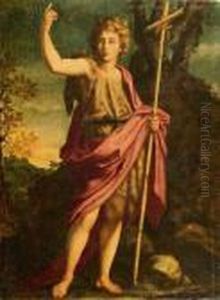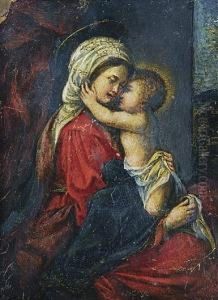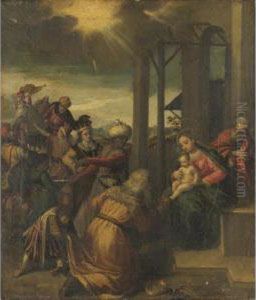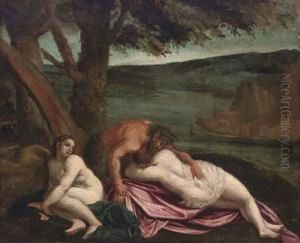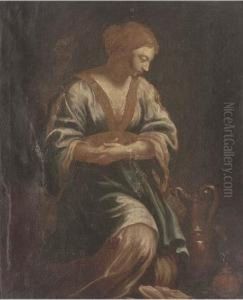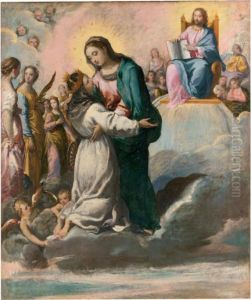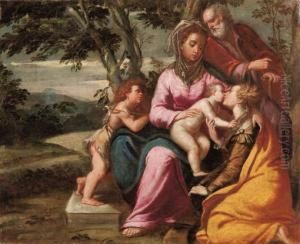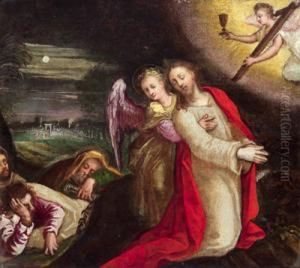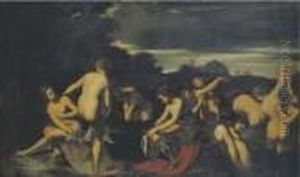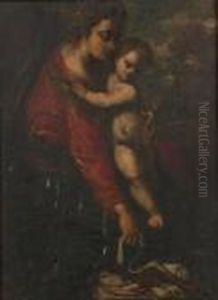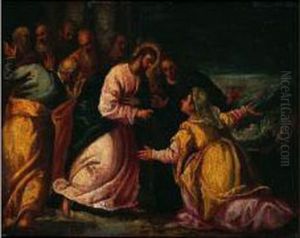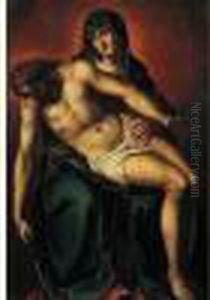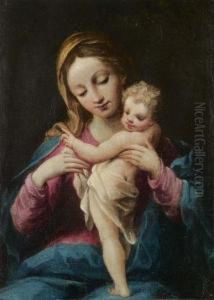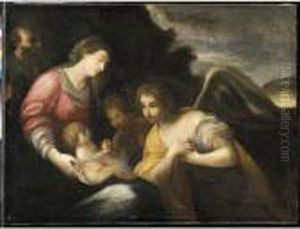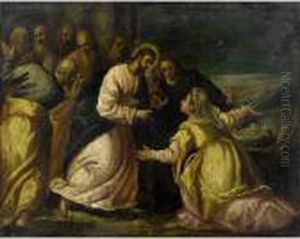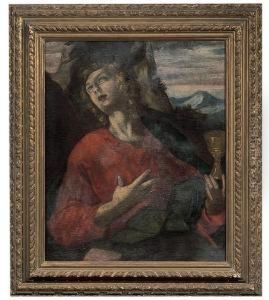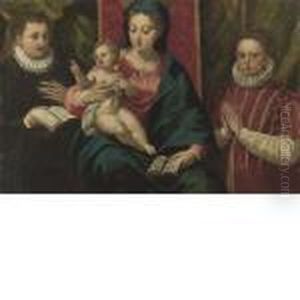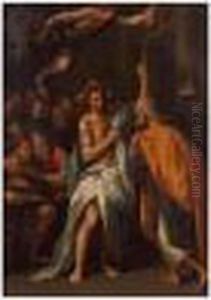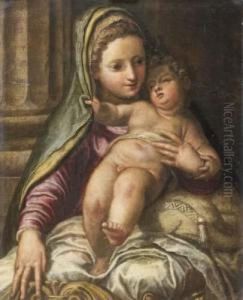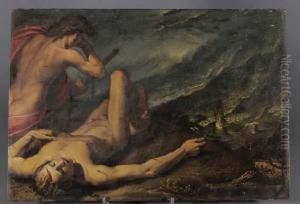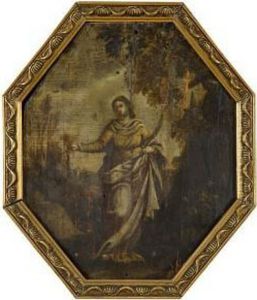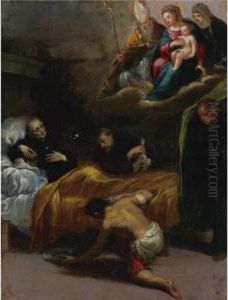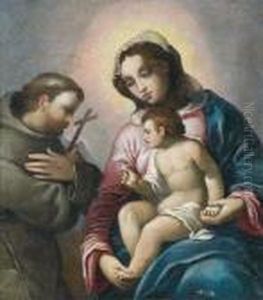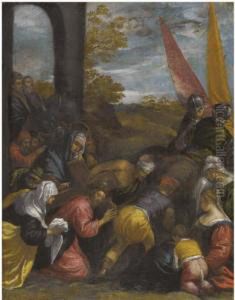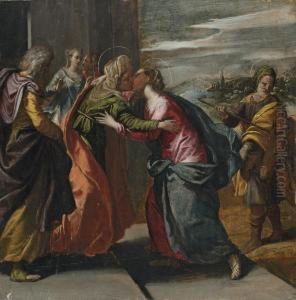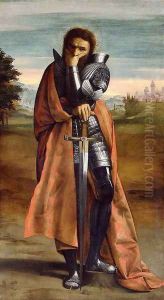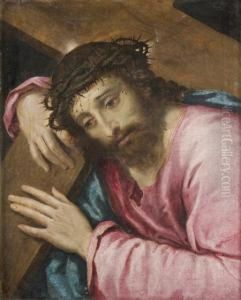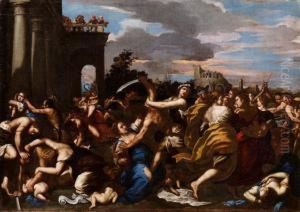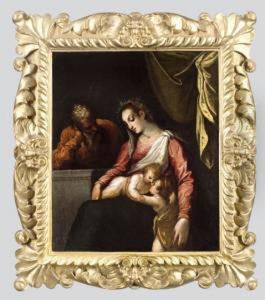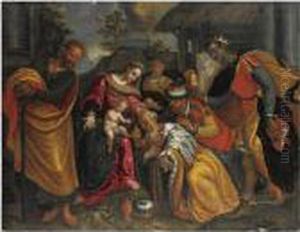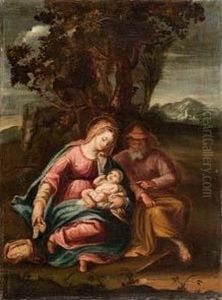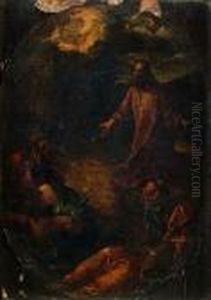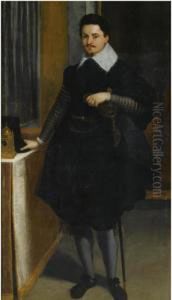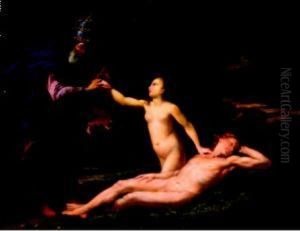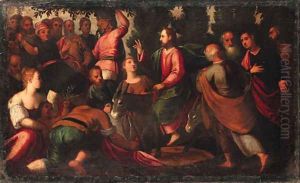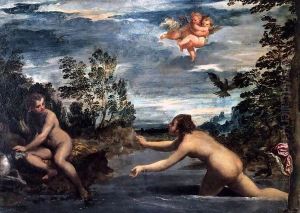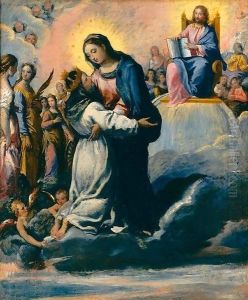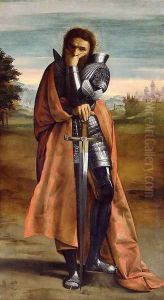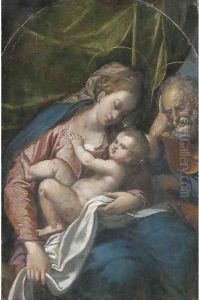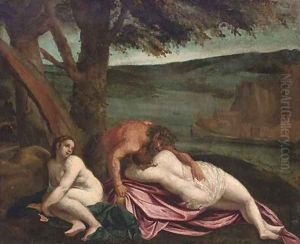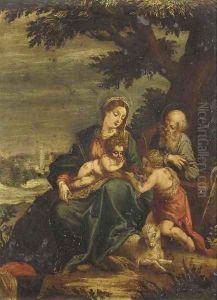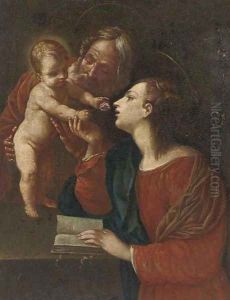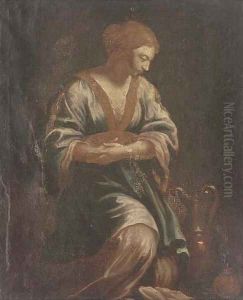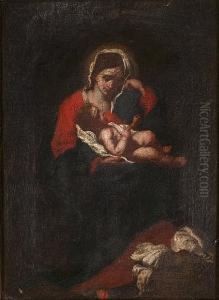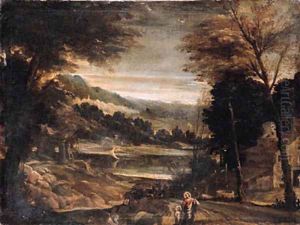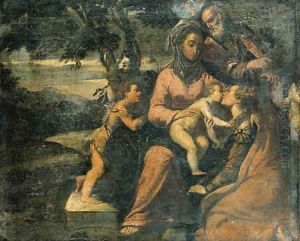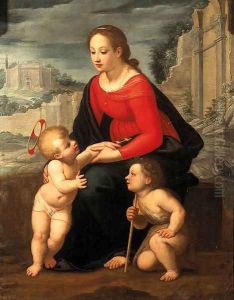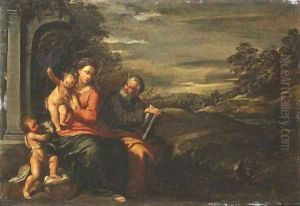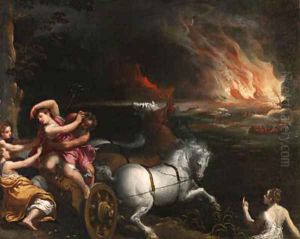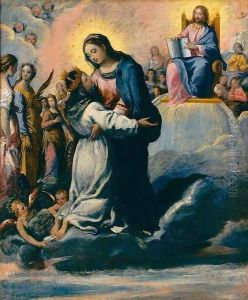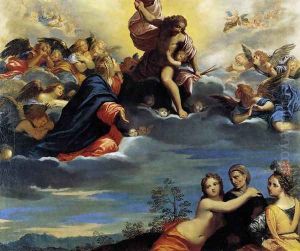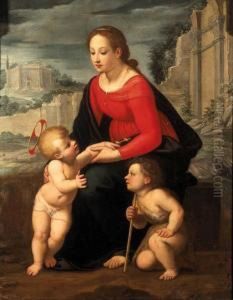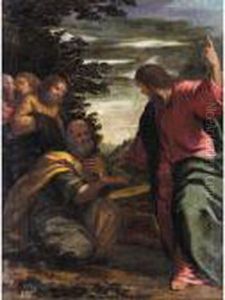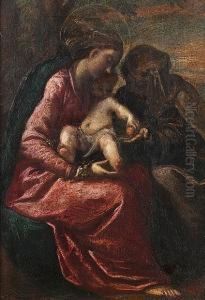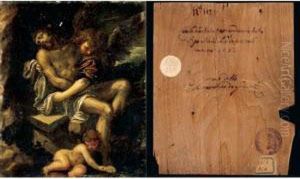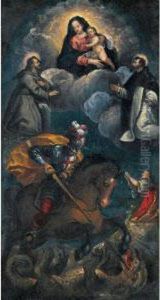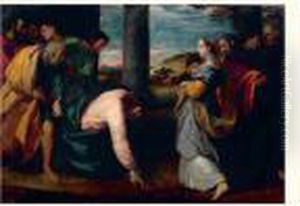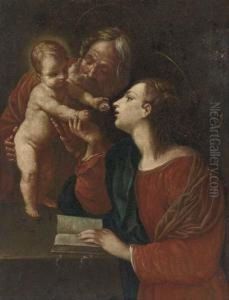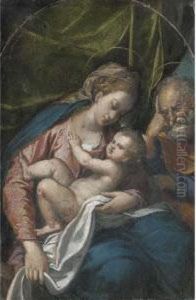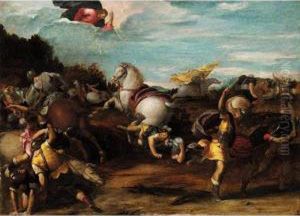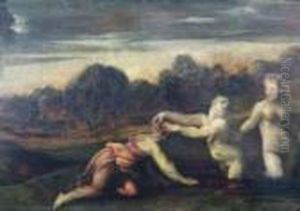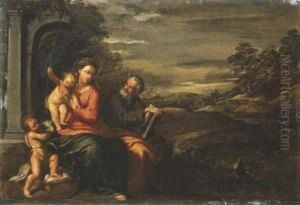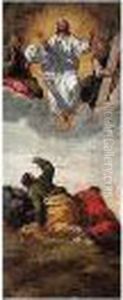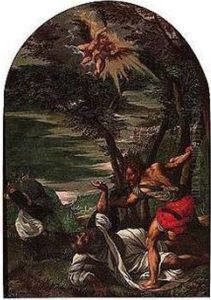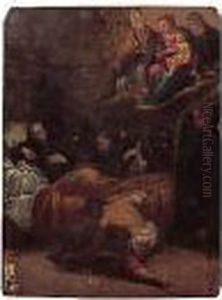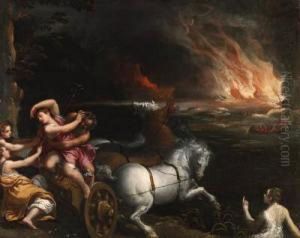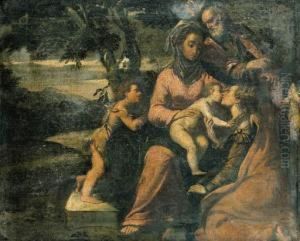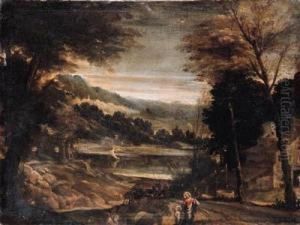Ippolito Scarsella (see Scarsellino) Paintings
Ippolito Scarsella, commonly known as Scarsellino, was an Italian late-Renaissance painter, active mainly in Ferrara. Born in 1551 in Ferrara, Italy, Scarsellino was the son of Sigismondo Scarsella, a painter himself, from whom he initially received his artistic training. He then went on to study with the painter Dosso Dossi, one of the leading artists of the Ferrarese school, inheriting a style reflective of both the Mannerist and the Venetian traditions.
Scarsellino's work is characterized by its use of vibrant colors, graceful figures, and a preference for mythological and allegorical subjects, although he also produced religious works and portraits. In his early years, he was influenced by the work of the Garofalo and by the Venetian School, particularly the works of Titian and Tintoretto, which is evident in his lush color palette and dynamic compositions.
Throughout his career, Scarsellino worked on various important commissions. He contributed to the decoration of the Palazzo dei Diamanti and the Palazzo Schifanoia in Ferrara. One of his significant religious works includes the frescoes in the chapel of the Ferrara Cathedral. Scarsellino's paintings were known for their elegance and often contained complex narratives, executed with a refined sense of design and a mastery of chiaroscuro techniques.
Scarsellino also worked outside of Ferrara; for instance, he painted a series of frescoes for the Oratorio del Gonfalone in Rome. His travels and work outside his hometown allowed his style to evolve by incorporating elements from different regional artistic movements of the period.
His later works display an increased interest in naturalism and a move away from the artificiality of Mannerism, reflecting the changes in artistic tastes of the time. Scarsellino's legacy continued through his influence on other artists in the region, and his works are held in various museums and collections across Italy and beyond.
Scarsellino died in 1620 in Ferrara. His art remains a significant representation of the transition from Renaissance ideals to the Baroque style that would dominate the subsequent century. His ability to blend the Ferrarese tradition with Venetian colorism and to adapt his style over his career has earned him a respected place in the history of Italian Renaissance art.
